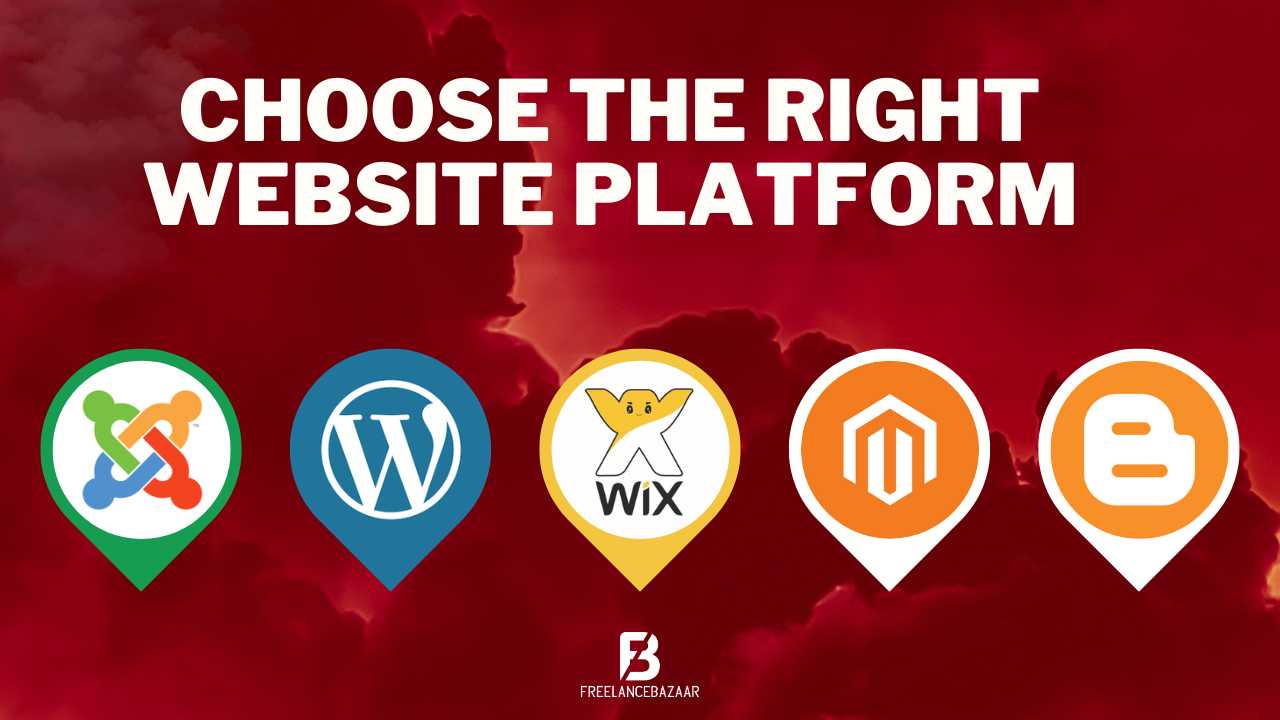Choosing the right website platform is a crucial decision that can significantly impact the success of your online presence. With a plethora of options available, selecting the most suitable platform can seem daunting. However, by considering various factors such as functionality, customization, scalability, ease of use, and budget, you can make an informed decision. This comprehensive guide will walk you through the key considerations and steps to help you choose the right website platform for your specific needs.
1. Define Your Website Goals and Requirements
Before diving into platform options, it's essential to clearly define your website goals and requirements. Consider factors such as the purpose of your website (e.g., e-commerce, blog, portfolio), desired features (e.g., online store, contact forms, social media integration), expected traffic volume, and long-term scalability needs. By identifying your specific goals and requirements, you can narrow down your choices and find a platform that aligns with your needs.
2. Consider Functionality and Customization Options
Evaluate the functionality and customization capabilities offered by different website platforms. Some platforms, like WordPress, provide extensive flexibility, allowing you to customize every aspect of your website using themes, plugins, and coding. Others, such as website builders like Wix or Squarespace, offer intuitive drag-and-drop interfaces and pre-designed templates for easy customization. Assess whether the platform's features and customization options align with your vision for your website.
3. Assess Scalability and Growth Potential
Consider the scalability of the platform to ensure it can accommodate your future growth needs. If you anticipate a rapid increase in website traffic or plan to expand your online business, choose a platform that can handle higher volumes without compromising performance. Look for features like load balancing, CDN integration, and the ability to handle large databases. Scalability ensures that your website can grow seamlessly alongside your business without the need for a platform migration.
4. Evaluate User-Friendliness and Ease of Use
The ease of use of a website platform is vital, especially if you have limited technical expertise or prefer a user-friendly interface. Consider the learning curve associated with each platform and assess whether it provides intuitive tools and a user-friendly dashboard. Look for features such as a visual editor, drag-and-drop functionality, and easy content management. A user-friendly platform empowers you to make updates and manage your website efficiently, saving you time and frustration.
5. Examine Available Support and Community Resources
The availability of support and community resources can be instrumental in your website development journey. Research the platform's support channels, such as documentation, tutorials, forums, and customer support options. Robust community resources, including active forums or user groups, can provide valuable insights, troubleshooting assistance, and a sense of camaraderie. Adequate support and a thriving community can help you overcome challenges and make the most of your chosen platform.
6. Consider Security and Maintenance
Ensuring the safety of your data and your visitors' information is of utmost importance when it comes to website security. Assess the platform's security measures, including SSL certificates, regular security updates, and backups. Ensure the platform follows industry best practices and has a track record of actively addressing security vulnerabilities. Additionally, consider the platform's maintenance requirements. Some platforms may require more frequent updates and maintenance than others, which can impact your time and resources.
7. Evaluate Integration and Third-Party Compatibility
Consider the integration capabilities of the website platform with other tools and services that are crucial to your business. Check if the platform supports popular third-party integrations, such as payment gateways, email marketing services, CRM systems, and analytics tools. Seamless integration can streamline your workflows, enhance user experience, and enable you to leverage the full potential of your website.
8. Assess Cost and Budget
Evaluate the cost implications associated with different website platforms, keeping your budget in mind. Some platforms offer free or low-cost options, while others may involve monthly or annual subscription fees. Consider not only the initial setup costs but also ongoing expenses such as hosting, domain registration, and premium themes or plugins. Additionally, weigh the cost against the features, scalability, and support provided by the platform to ensure you are getting the best value for your investment.
9. Read Reviews and Seek Recommendations
Research and read reviews of different website platforms to gain insights into the experiences of other users. Look for feedback on performance, ease of use, customer support, and overall satisfaction. Additionally, seek recommendations from peers, industry professionals, or web developers who have experience with different platforms. Their firsthand experiences can provide valuable perspectives and help you make a more informed decision.
10. Test and Experiment
Consider testing out different platforms before making a final decision. Many platforms offer free trials or demo versions that allow you to explore their features and functionality. Take advantage of these opportunities to experiment and assess whether the platform meets your specific requirements. Testing the platform firsthand can provide a deeper understanding of its user experience and suitability for your website.
Conclusion
Choosing the right website platform is a crucial step in establishing a successful online presence. By defining your website goals, considering functionality and customization options, assessing scalability and ease of use, evaluating support and security measures, examining integration capabilities, assessing cost and budget, reading reviews, and testing different platforms, you can make an informed decision that aligns with your needs and sets the foundation for a thriving website. Remember, selecting the right platform is not a one-size-fits-all approach, so take the time to carefully evaluate your options and choose a platform that empowers you to create an engaging and successful website.





